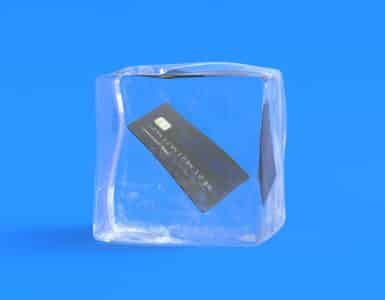Exactly how your credit score is calculated may seem complex — and maybe even mysterious. But when you break it down into smaller (and less complicated) pieces, it can help remove the mystery, which in turn can enhance your ability to build and maintain a solid score.
What is Credit Age?
Let’s tackle credit age – which is one of the factors used to calculate your credit score – used by everyone from lenders to landlords to help determine your creditworthiness. The VantageScore model takes the length of time you have had credit (aka credit age or depth of credit) into consideration when formulating your score.
Unpacking Credit Age for VantageScore
Credit age makes up 21 percent of VantageScore*.
How is it tabulated? According to VantageScore, depth of credit looks at the age of someone’s open or active credit accounts, plus the average, oldest, and youngest account age. Older accounts tend to help boost a VantageScore because they offer more insight into how someone manages their finances over time. That means someone who opened a credit card five years ago would have a longer credit age (or a thicker credit file) than someone with a credit card for only a year.
The depth of credit category, notes VantageScore Solutions, also considers the type of credit accounts a person maintains. The two main kinds are revolving (such as credit card accounts) and installment debt (a car payment or mortgage). Demonstrating that you can handle both types of credit is likely to bump up your score, according to VantageScore Solutions, more than just having a single type of credit on your reports.
How to Improve Credit Age
In many cases, the longer you have had credit, the better. This means that younger people with no credit card accounts or other types of credit can find it challenging to wait for their credit age to mature, so to speak.
Join a More Established Account
If you have a credit age that’s on the short side, being added to a more established account can boost your score. Often, parents will add their children or a spouse will add their partner to an older credit card account to help give them a longer credit history. If this is something you’re considering, it’s important to make sure that the account holder checks with the issuer to confirm credit usage is being reported to the three major credit scoring bureaus: Experian, Equifax, and TransUnion.
Apply for a Secured Credit Card
Fortunately, a variety of lenders now offer what’s known as a secured credit card account to those with little or no credit to help them build up their file so they can eventually qualify for better rates on loans and other credit products.
How to Get a Secured Card. To obtain a secured credit card, you deposit with the issuing institution as collateral. Once you get the card, use it at least once a month and then pay it off in full every month. This is where your patience comes in. In 18 or 24 months you should be able to transfer to a traditional credit card.
Don’t Close Old Accounts
Closing your oldest account can hurt your credit score. If you are paying an annual fee on the credit card account, call your credit issuer and ask if you can move to a different card with a lower fee or no fee at all. And remember, the answer is always no if you don’t ask!
With reporting by Casandra Andrews
*based on VantageScore 3.0






